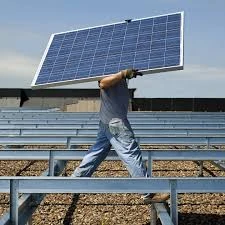bifacial solar panels vs monofacial
Bifacial Solar Panels vs. Monofacial Solar Panels A Comprehensive Comparison
In the realm of renewable energy, solar panels have increasingly become a popular choice for both residential and commercial energy needs. Among the various types of solar panels available, bifacial and monofacial designs have gained significant attention. Understanding the differences between these two types can help consumers make informed decisions tailored to their specific energy requirements.
Design and Functionality
Monofacial solar panels are the traditional type, featuring a solar cell layer on one side, which absorbs sunlight and converts it into electricity. These panels are typically mounted on rooftops or ground systems that receive direct sunlight. On the other hand, bifacial solar panels have solar cells on both sides, allowing them to capture sunlight from both the front and back. This dual-sided design enables bifacial panels to utilize reflected sunlight from surrounding surfaces, such as the ground or nearby structures, potentially increasing energy production.
Energy Efficiency
One of the most compelling advantages of bifacial solar panels is their enhanced energy efficiency. Studies have shown that bifacial panels can produce up to 20-30% more electricity than their monofacial counterparts, depending on environmental conditions and the specific installation setup. The additional production comes from the rear side of the panel, which can capture reflected sunlight, especially in areas with bright, reflective surfaces like sand or snow.
In contrast, monofacial panels rely solely on direct sunlight exposure, which can sometimes limit their overall output, especially in shaded areas or less optimal locations. For installations in regions with high albedo or reflective conditions, bifacial panels present a significant advantage.
Installation and Cost
bifacial solar panels vs monofacial

While bifacial panels offer higher efficiency, their installation can be more complex and costly. The requirement for elevated mounting systems to maximize rear-side sunlight exposure means that installation costs may increase. Furthermore, the balance of system costs—such as inverters and wiring—could also escalate due to the additional energy production capabilities of bifacial panels.
Monofacial solar panels, conversely, are generally simpler to install and are cheaper upfront. Their straightforward design usually keeps costs lower, which can be appealing for budget-conscious consumers or projects where efficiency is not the highest priority.
Longevity and Durability
Both bifacial and monofacial panels are designed to be durable and withstand environmental stressors, such as hail, rain, and high winds. However, bifacial panels are often built with more robust materials to cater to the potential for exposure on both sides. This durability can lead to longer lifespans and better performance over time, especially in harsher climates.
Environmental Considerations
The choice between bifacial and monofacial solar panels can also be influenced by environmental factors. Bifacial panels tend to perform better in snowy regions, where the reflectivity of snow can enhance energy production. They are also beneficial in locations with high ambient light conditions, as the dual-sided capture can lead to a more efficient system.
Conclusion
In summary, the decision between bifacial and monofacial solar panels hinges on several key factors, including energy efficiency, installation costs, and specific environmental conditions. Bifacial solar panels offer greater electricity generation potential, making them an attractive option for many applications, but their increased installation complexity and cost may be a barrier for some consumers. Conversely, monofacial panels provide a reliable solution that is easier and more cost-effective to install. By assessing individual needs and local conditions, consumers can choose the right type of solar panel to maximize their renewable energy investment.
-
Unlocking Energy Freedom with the Off Grid Solar InverterNewsJun.06,2025
-
Unlock More Solar Power with a High-Efficiency Bifacial Solar PanelNewsJun.06,2025
-
Power Your Future with High-Efficiency Monocrystalline Solar PanelsNewsJun.06,2025
-
Next-Gen Solar Power Starts with Micro Solar InvertersNewsJun.06,2025
-
Harnessing Peak Efficiency with the On Grid Solar InverterNewsJun.06,2025
-
Discover Unmatched Efficiency with the Latest String Solar InverterNewsJun.06,2025







